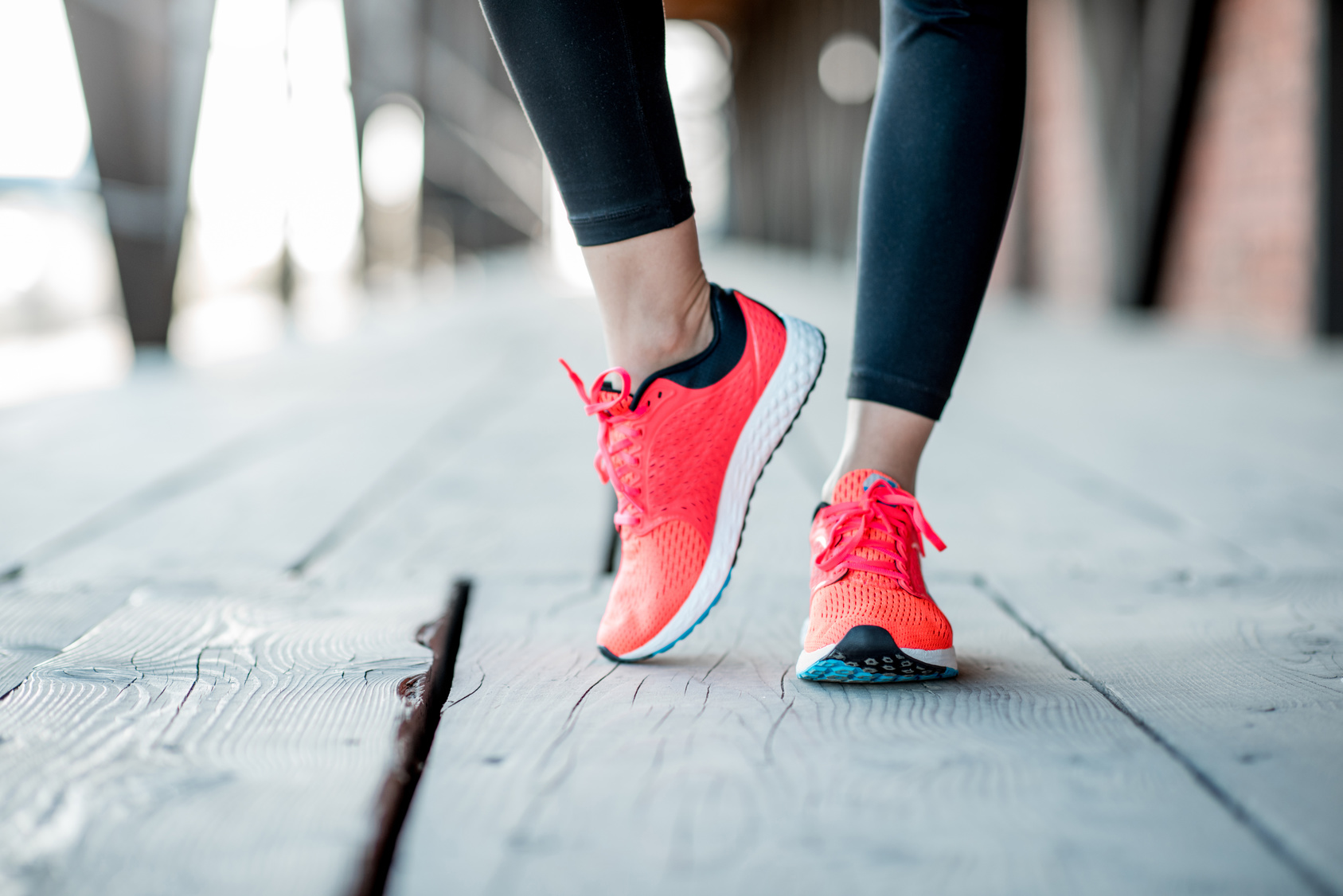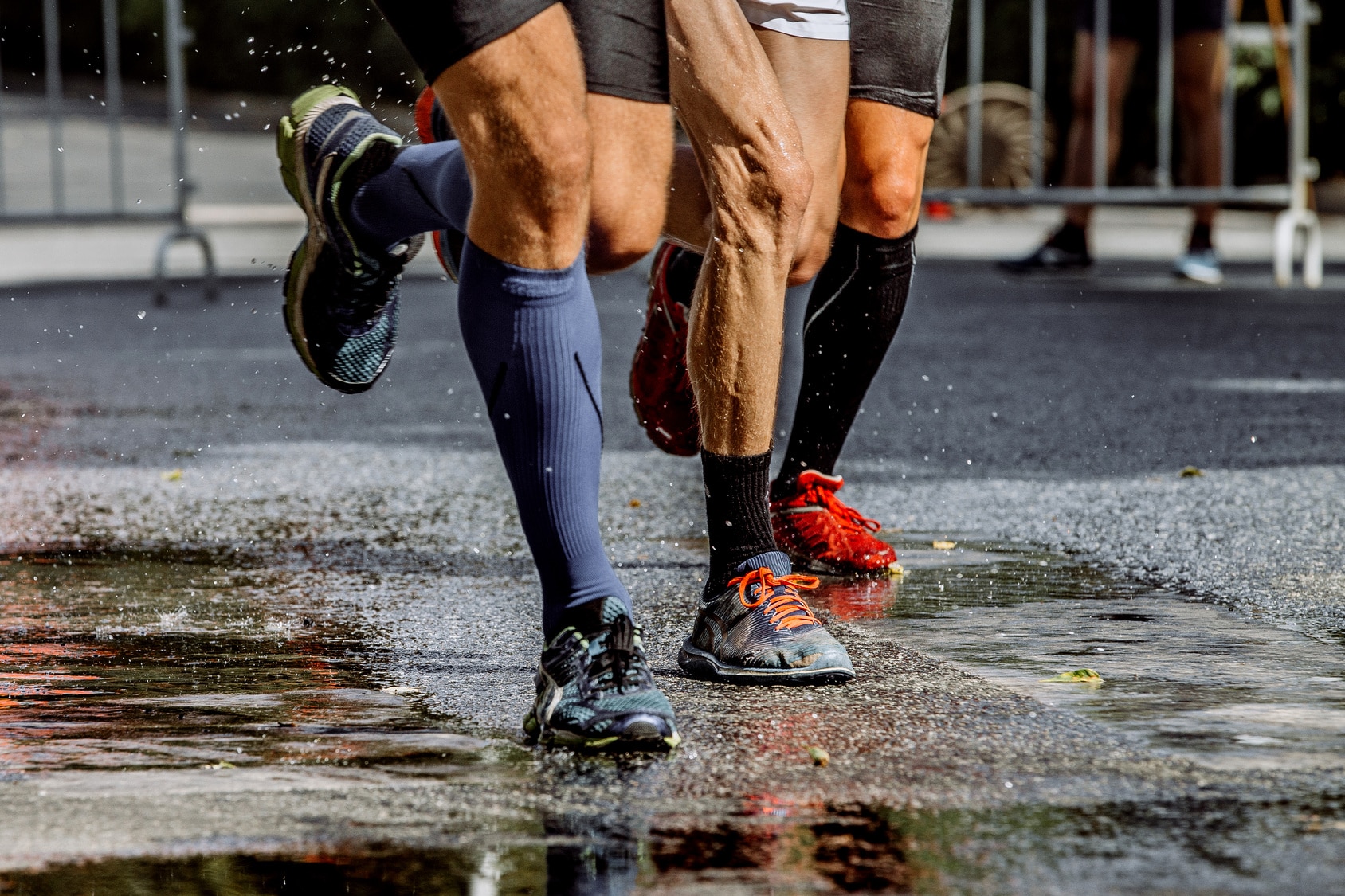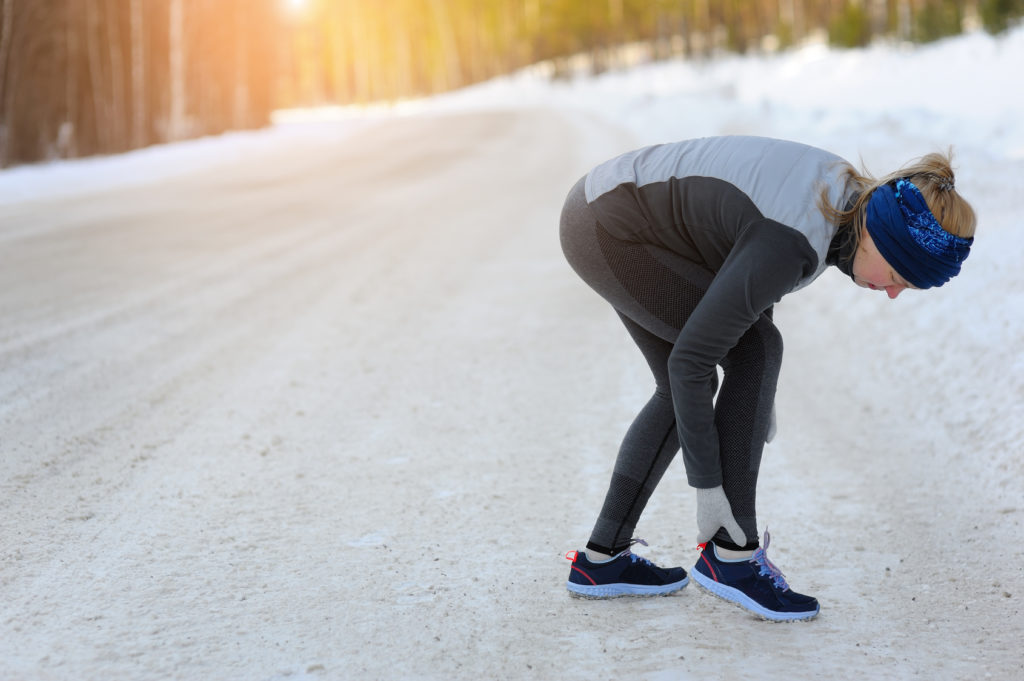Thinking about giving track running a shot but feeling awkward just looking at that red oval? I’ve been there.
I remember my first time stepping onto a track. I was a clueless newbie clutching a beat-up stopwatch, watching sprinters fly by in lane 1 like they were training for the Olympics.
My heart was racing, and not from running—I was terrified I’d screw something up. Wrong lane, wrong pace, maybe get lapped and humiliated.
I felt like an outsider.
But here’s the truth no one tells you: everyone starts out feeling that way. Every seasoned runner you see today once stood where you are—unsure, slow, and trying to figure it out.
And the track? It’s not just for elites. It’s actually one of the best places to level up your running. It’s a space where every step teaches you something—about pace, grit, form, and pushing past your limits.
So let me walk you through the basics. By the end of this, you’ll see the track not as some intimidating arena, but as a super useful tool for improving your speed and confidence.
So What Is a Running Track, Anyway?
Simple: it’s a 400-meter loop made for running. That red rubber surface? It’s not just for looks.
Most tracks are made of synthetic rubber or polyurethane, which gives a little bounce and cuts down the pounding on your joints. Way easier on the body than pavement.
Here’s the lowdown:
- Lap Length: One full lap in the innermost lane is 400 meters. That’s roughly a quarter mile. So yeah, four laps = about a mile. Technically, it’s around 9 meters short of a true mile, but for training? Close enough.
- Lane Math: The farther out you go, the longer each lap gets. Lane 8 can be 40–50 meters longer than lane 1. That’s why races use those funky staggered starts. So if you’re doing laps in lane 6, just know you’re running a little extra. It won’t ruin your training—but it’s good to be aware.
- Consistent Surface: No hills. No curbs. No cars trying to murder you like they do on busy roads. The track is smooth, flat, and predictable. That consistency is gold when you’re working on pace, intervals, or just trying to get a solid session in.
- Helpful Markings: All those lines and arrows? They’re actually useful. The straight section (called the “straightaway”) is 100 meters. The curve? Another 100. So if you run one straight + one curve, that’s 200m. Boom. Now you can do short intervals without needing a GPS watch or fancy tech.
Quick math: 4 laps = ~1 mile, 8 laps = ~2 miles, 12.5 laps = 5K. Write those numbers down and make the track your measuring tape.
“But Isn’t Running in Circles… Boring?”
I get it. On paper, it sounds dull.
But honestly? That repetition is what makes it powerful.
The track strips away distractions. No hills. No traffic. No weird terrain changes. Just you and your effort. It becomes a kind of mental dojo—a place where you can focus.
For me, the track became a training lab. I could test my speed, hold a steady pace, and measure exactly how I was improving. No more guessing.
No more vague “felt good” runs.
The numbers don’t lie.
Why Bother with Track Workouts?
I used to be a road-only guy. Track workouts sounded scary and intense. But after just a few weeks of doing intervals once a week, my endurance shot up, my pace dropped, and I felt faster and stronger.
Here’s why the track works:
1. You Know the Distance—Exactly
Forget GPS errors and guessing how far you’ve gone. On the track, one lap = 400 meters. No surprises.
That’s why it’s the perfect place for interval training. You can time your 200s, 400s, 800s, whatever—and know you’re running the right distance, every time.
Studies back this up. One research project found that runners who added interval sessions on the track (like 200m fast, 200m recovery) improved their VO₂ max, sprint times, and even dropped body fat—more than those doing just steady road runs.
I’ve seen it in my own coaching, too. Athletes who commit to a weekly track session make serious gains. It’s not magic—it’s consistency plus effort in a setting that gives you honest feedback.
2. Speed Happens Here
If your goal is to run faster, the track is your best friend.
That slight bounce in the track surface helps absorb impact and gives you a bit of return with each step. Add in the fact that you’re not dodging potholes or climbing hills, and you’ve got a space built for pure speed.
Even marathoners do track work. Why? Because pushing the pace on a flat surface teaches your legs and lungs how to move faster—and that strength translates to your long runs too.
3. Building Confidence, One Split at a Time
My first real track workout humbled the hell out of me. I thought, “400 meters? That’s one lap—how bad could it be?” Famous last words. By rep three, I was sucking wind and seriously questioning my life choices.
But week after week, something clicked. I hit my splits. I stopped dreading that burning lung feeling. I stopped panicking when lactic acid kicked in. And I started seeing progress—not just on paper, but in my head.
Track teaches you how to suffer smart. It forces you to face discomfort in a place where it’s safe to fail and grow. By the time race day rolls around, that pain zone won’t freak you out anymore. You’ve been there. You know it. You own it.?
4. A Change of Scenery
Let’s be honest—all tracks kinda look alike. But the training stimulus they give? Totally different beast from your usual jog route.
Running on the track forces you to get intentional. You’re not just “going for a run.” You’re doing 6×400 at 5K pace. Or 12×200 with 100m jog.
That structure gives your training purpose. And that variety keeps your body guessing—and your brain from checking out.
I like to use the track for sharp, focused work. Then I save my easy miles and long runs for the road or trails. That balance? It keeps you healthy, motivated, and less likely to burn out.
5. The Ultimate Feedback Loop
Want to actually see your progress? Use the track.
It’s called a track for a reason—because everything’s measured, controlled, and repeatable.
Four laps is a mile. No guessing. No Strava discrepancies.
If last month you were walking between intervals, and now you’re jogging your recoveries, that’s real growth. If your splits dropped from 2:10 to 2:00 per 400m, that’s proof you’re getting fitter.
I tell my runners to log every session. Even the ugly ones. Especially the ugly ones. It’s not about perfection—it’s about patterns. And the track shows those patterns better than any road loop ever will.
Track Etiquette 101 (Without Being That Guy)
Walking onto a track for the first time can feel like jumping onto a freeway. Everyone’s got their own pace, direction, and flow. But don’t stress—there are just a few simple things to keep in mind.
Passing Rules: Stay Predictable. Stay Chill.
On most tracks, we run counter-clockwise. That means if someone’s faster than you, they’ll usually pass on your right, swinging into lane 2 or 3 to go around.
Your job? Hold your line. No zig-zagging, no sudden lane changes. Stay steady and let the speedster do the work.
Sometimes you’ll hear someone shout “Track!” as they approach. That’s runner speak for “Heads up, I’m passing!”
It’s not rude—it’s actually helpful. You don’t have to move; just be aware and maybe hug the inside of your lane a little tighter so they can cruise past without drama.
Some runners might say “on your right” or “lane 1,” depending on where you are, but the vibe is the same.
When I started, I thought I had to jump out of the way every time I heard “Track!”—like it was a fire drill.
Nope. You just stay in your lane and let them do their thing. Truth is, most experienced runners won’t even bother yelling. They’ll just quietly pass and vanish down the stretch.
If you’re the one passing someone and they haven’t noticed you, a calm “excuse me” or “coming on your right” goes a long way. And if you’re getting passed a lot—don’t sweat it.
We’ve all been there. It’s like skiing: the faster person has to avoid the slower one, not the other way around.
Walkers & Side-by-Side Joggers: Please Use the Outer Lanes
Walking is totally cool at the track. I walk there for warm-ups and cooldowns all the time. But if you’re walking, especially with friends, stay in the outer lanes—lane 6, 7, or 8.
Same goes for group jogs or recovery shuffles. Don’t turn lane 1 into a social lounge.
I’ve seen full-blown brunch conversations happening mid-track, blocking 3–4 lanes like it’s a sidewalk café. Don’t do that. If you need to chat or take a breather, just step off the track. It’s basic respect.
My go-to? I warm up in lane 8 if the track’s busy. Keeps me out of the way, and I can still shake out the legs without playing dodgeball.
Every Track Has Its Own Vibe
At your local high school track, you might see everything from bootcamps to barefoot kids to folks doing TikTok dances in lane 5.
The etiquette there is usually chill, but safety still matters. Keep your head up, don’t blast music so loud you miss a warning, and definitely don’t bring your dog for a poop jog.
Now, if you’re training on a college or elite-level track, expect more structure.
Athletes there are often locked into strict intervals, and they’re moving.
Give them space. Read the room. And always check the posted rules—some tracks don’t allow public use during school hours or team practice. Others ban spikes, bikes, skateboards, or even water bottles on the surface.
If There’s a Team Workout Happening… Respect It
You’ll know it’s a team session if there’s a coach on the side barking splits and a bunch of runners moving like clockwork. In that case, be smart.
Don’t hog lane 1. If they need space, either wait it out, run in an outer lane, or do what I’ve done before—start your workout on the opposite side of the track to stay out of their way.
Once, I showed up to a local track to find a junior club doing repeats. I shifted to lane 2 and started my intervals on the backstretch. Zero issues.
They got their workout done. I got mine in. That’s how you share space without stepping on anyone’s groove.
Be a Good Human Out There
Smile. Nod. Give a wave. Help someone if they look lost. I once gave a quick lane-use tip to a beginner who kept drifting into lane 1 mid-warm-up. Just a kind nudge, nothing preachy. They thanked me and adjusted right away.
And if you’re the one who accidentally cuts someone off or jogs into lane 1 during someone’s rep? No biggie. Give a little wave and carry on. Happens to the best of us.
The Golden Rule: Don’t Be a Jerk
Track etiquette isn’t about being perfect. It’s about being respectful and aware. After a few sessions, it becomes second nature. I learned most of it just by watching others and asking questions.
So don’t stress over it. You already win points just by caring enough to learn this stuff. That puts you ahead of half the people out there.
Track Running Shoes & Gear: What You Actually Need
When it comes to track workouts, people love to overcomplicate things. Flashy spikes, carbon plates, the whole works.
But here’s the truth: you don’t need high-tech gear to get faster. What you do need is consistency, effort, and shoes that don’t mess with your stride.
Your Regular Running Shoes Are Just Fine
Let’s get this out of the way—if you already own a pair of comfy, reliable running shoes, you’re good.
I did an entire year of weekly track workouts in my beat-up daily trainers and still knocked out personal bests.
Were they flashy? Nope.
But they worked. And that’s the point. Gear doesn’t fix bad form. Consistency does.
Spikes: Flashy, but Not Essential (Especially for Beginners)
Track spikes are great—for short-distance sprinters. We’re talking 100 to 400 meters. They’re super light and make you feel fast, but they hammer your calves and Achilles.
Most beginners? Not ready for that.
You’re better off building a solid base with regular shoes before even thinking about spikes. And heads up—not every track allows them, anyway. So, no need to rush.
Racing Flats or Lightweight Trainers: A Solid Middle Ground
Want something that feels faster but doesn’t wreck your legs?
Try a pair of racing flats. They’re light, responsive, and easier on the body than spikes. I’ve used mine for interval days when I want that “race day” feeling without going all-in on gear.
But honestly? Even this is optional. Your go-to trainers are still your best training partners.
Carbon-Plated Super Shoes: Cool Tech, But Tread Lightly
Super shoes like Vaporflys are built for straight-line speed, not tight curves. I’ve seen runners wobble like newborn deer trying to corner in them on the track. Plus, overusing them weakens your stabilizer muscles.
I tell my athletes: think of these shoes like espresso—great once in a while, but not something you want to depend on daily. Once a week, max.
Other Gear That’s Actually Useful:
- Moisture-wicking clothes – Layers if it’s cold. Trust me, cotton turns into a wet sponge.
- Water bottle – Most tracks don’t have fountains. Bring your own.
- Watch or timer – For intervals, or just to get a sense of pace. Or run by feel. Either works.
- Hat/sunglasses/sunscreen – Tracks can feel like frying pans under the sun.
- Towel – You’ll need it. Enough said.
Coach Tip: Rotate your shoes. Save your “race-day” shoes for special sessions. Use your daily trainers for most of your mileage. It’s like cars—don’t drive a Ferrari through traffic every day. Save it for the open road.
Don’t Stretch Your Recovery Too Far
Let’s get real.
If you’re taking 5-minute breaks between 400m repeats, chances are you went out too hot… or you’re just not ready for that many reps yet. It happens. No shame in dialing it back.
Now, if your form is falling apart mid-workout?
That’s your cue to stop. I always tell my athletes—it’s better to cut one rep short than limp through it and risk injury. This isn’t about punishing yourself. It’s about training smart.
That said, try to stick to the recovery plan. Whether it’s a 200-meter walk or 2-minute jog, the goal is to start the next interval with a little fatigue in your legs.
That’s how you train your body to push when it’s tired—because that’s exactly what racing feels like.
Over time, you can make your workouts harder without even touching the pace. How? By shaving down your rest. Going from a 400m walk to a 200m jog between reps is a sneaky way to level up without going all out.
Cool Down or You’ll Regret It Tomorrow
Once the hard work’s done, don’t just crash into the car and call it a day.
You need to cool down. I’m talking 5 to 10 minutes of easy jogging—either a few slow laps or a chill run around the block.
Why? Because your body needs help winding down. That cooldown jog helps flush out the junk in your legs and sets the tone for better recovery. Skip it, and you’ll likely feel like trash the next day.
Personally, I like stretching later in the evening—foam rolling the calves, quads, hammies. Nothing fancy, just a few minutes while watching Netflix. It’s those little habits that help you stay consistent long term.
And honestly, there’s something peaceful about jogging slowly around the track as the sun sets, feeling that mix of exhaustion and pride. That’s the stuff that keeps you coming back.
Don’t Let the Track Burn You Out
Let me be clear: track work is spicy. You don’t need to do it every other day to get faster.
For beginners, once a week is plenty. Maybe even once every two weeks if you’re just getting started or coming off an injury. More than that, and you’re asking for trouble—fatigue, burnout, injury, you name it.
And here’s a warning: don’t turn the track into your everyday route.
Easy runs and long runs should live on the roads or trails. Doing slow miles on a track isn’t just boring—it messes with your body. Tracks only curve one way, and running endless laps that direction can cause weird muscle imbalances over time.
Trust me, I’ve seen it happen.
Stick to using the track for what it’s good at—controlled, focused speedwork. That way, it stays fresh and exciting instead of becoming another mental drag.
Start Small, Build Slowly
You wouldn’t show up to the gym after months off and try to deadlift your bodyweight on Day One.
Same rules apply here.
If it’s your first time on the track, keep it simple. Something like 4x200m strides or a few 1-minute pickups is more than enough. Feel it out.
One of the coaches put it best: don’t start with 8x400m. That’s a shortcut to fatigue and frustration. Begin with 3x400m and full rests. Nail that. Then build week by week—4 reps, then 5, and so on.
That’s progressive overload—adding just enough to challenge your body without wrecking it. Maybe you go from 8x200m with full rest to 8x200m with half the recovery. Small tweaks like that stack up over time.
Bottom line: listen to your body. Soreness in your calves and quads? That’s normal. Sharp pain or being totally wrecked the next day? Back off.
Beginner Track Workouts That Actually Work
When I first stepped onto a track, I felt like a complete impostor.
Everyone around me looked like they knew exactly what they were doing.
Me?
I was just trying to survive the warm-up without gasping like a dying fish. But the track taught me some lessons real fast—one repeat at a time.
These workouts below are beginner-friendly, but that doesn’t mean easy. They’ll wake up your legs, push your lungs, and sharpen your form. Let’s dive in.
🔹 400m Repeats – A Solid Start
Try 4 to 6 × 400m at a strong, steady pace. Between each one, jog or walk 400m to catch your breath. Think of it like this: run one lap at about 80–90% effort, then take a full lap to recover—just don’t stop moving.
This was my first “real” interval workout. I remember doing just four reps and feeling like I’d conquered Everest. But it works. It teaches your body to handle pace without burning out. Over time, you can stack more reps or shave down the recovery.
🔹 200m Repeats – Speed That Doesn’t Break You
Not ready for full laps? Go half: 6 to 8 × 200m fast, with 200m walking or slow jogging between.
One turn, one straight—short and sharp. These are great for working on form: relaxed shoulders, fast feet. I like to tell runners to aim for around their 800m or mile race pace—hard but controlled.
They’re over in 40–60 seconds for most beginners. Honestly, they’re kind of fun. Like sprinting back in middle school before we started overthinking everything.
🟢 Coach’s tip: Run the straights, recover on the curve, or jog back to the start if you’re not on a full loop. Either way, don’t skip the recovery—speed without form is a recipe for pulled hamstrings.
🔹 100m Strides – Small But Mighty
Perfect for beginners or recovery days. On a standard track, run the straightaway (100m) at around 85–90% effort, then walk the curve. Do this 8 to 10 times.
This isn’t about going full send—it’s about quick turnover, clean form, and fluid movement. I like using strides at the end of an easy run or as a short, sharp standalone workout when time is tight.
🔹 Ladder Workout – Up & Down the Pain Scale
A ladder workout adds variety and keeps your brain engaged. Try this set:
200m – 400m – 800m – 400m – 200m, with a slow 200m or 400m jog after each.
That 800m in the middle? That’s your test. It’ll sting. But once you clear it, the rest feels like a victory lap.
If you’re new to track stuff, skip the 800m the first few times. Do a 200-400-400-200 setup instead.
🔹 Mile Repeats – The Big League Session
This one’s for advanced beginners aiming at longer races (think 10K or half marathon). Classic workout:
2 or 3 × 1600m (4 laps) at a “comfortably hard” effort—roughly your 10K race pace or a pace you could hold for 30–40 minutes straight. Recover with 1–2 laps of easy jogging between.
I still use this workout during base building. It’s not sexy. But it works. It teaches you how to hold pace without falling apart.
🔹 Fartlek on the Track – No Watch Needed
Don’t want to stress about splits? Do a fartlek session.
Try this: alternate hard/easy every lap for 15–20 minutes. Or go:
1 lap fast, 1 lap easy, 2 laps fast, 1 lap easy, 1 lap fast.
No fancy math. No exact times. Just effort and movement. It’s a great way to get comfortable on the track without overthinking it.
My Final Track Wisdom
Alright, runner. Before you head off and tackle the oval, here’s some real talk from a coach who’s spent years sweating it out and coaching others to do the same.
1. Show Up More Than You Show Off
I’ve seen this play out too many times: someone crushes one monster track session and then ghosts the oval for a month.
That’s not how progress works.
Want to get faster? Show up.
Even once a week. Even when you’re tired. Even when your reps are ugly. Because showing up—consistently—is how those tiny gains stack up into something big. I’ll take a year of “solid” over one day of “heroic” any time.
2. Make It Suck Less by Making It Fun
Track isn’t just about pain—it can be weirdly fun.
Some days, hitting your target time feels like hitting a jackpot. Other days, you’ll laugh at how slow your legs feel.
Either way, enjoy it. Try workouts that fire you up—maybe it’s the grind of 800s or the thrill of fast 200s. Celebrate small wins, even if it’s just feeling stronger on rep 6 than rep 2. That stuff matters.
3. Recover Like You Mean It
You don’t grow stronger from workouts—you grow from recovering after them.
Let that sink in.
So after you beat yourself up on the track, respect the rest.
Easy days? Actually make them easy. Fuel up, sleep well, and don’t skimp on water. Think of recovery not as skipping work, but as part of the work. That’s where the real fitness happens.
4. Park Your Ego at the Gate
Track workouts are not a competition unless you’re in a race.
If someone blows past you—good for them. Let them go. You’ve got your own mission.
And if you’re the one passing, don’t be a jerk about it. We’re all trying to get better.
I’ve had sessions where I was the slowest runner out there and others where I led every rep.
Neither meant much—what mattered was that I gave it my best that day. Stay humble. Be kind. Cheer for someone else between reps—you never know who needs it.
5. Adjust When You Need To
Not every track day will be magic. Some days your legs just don’t show up.
That’s fine. Modify. Cut a rep. Slow the pace. Come back next week.
The track doesn’t care—it’ll be waiting.
And if you’re feeling beast mode and everything’s clicking? Go ahead and push a little harder on your last rep. Just don’t overdo it. Learning when to push and when to pull back? That’s what separates smart runners from injured ones.
6. Build That Track Grit
The oval teaches a kind of toughness you can’t fake. When you’re gasping through rep 9 and still line up for 10? That’s character.
That grit carries into race day—and life.
The track is brutal, but it’s honest. It shows you exactly where you’re at, and if you keep showing up, it’ll show you how far you’ve come.
Now it’s your turn:
What’s your go-to track workout?
Have you ever had a breakthrough on the oval—or a meltdown?
Drop a comment and let’s talk track war stories.
The clock’s waiting. Let’s see what you’ve got.











